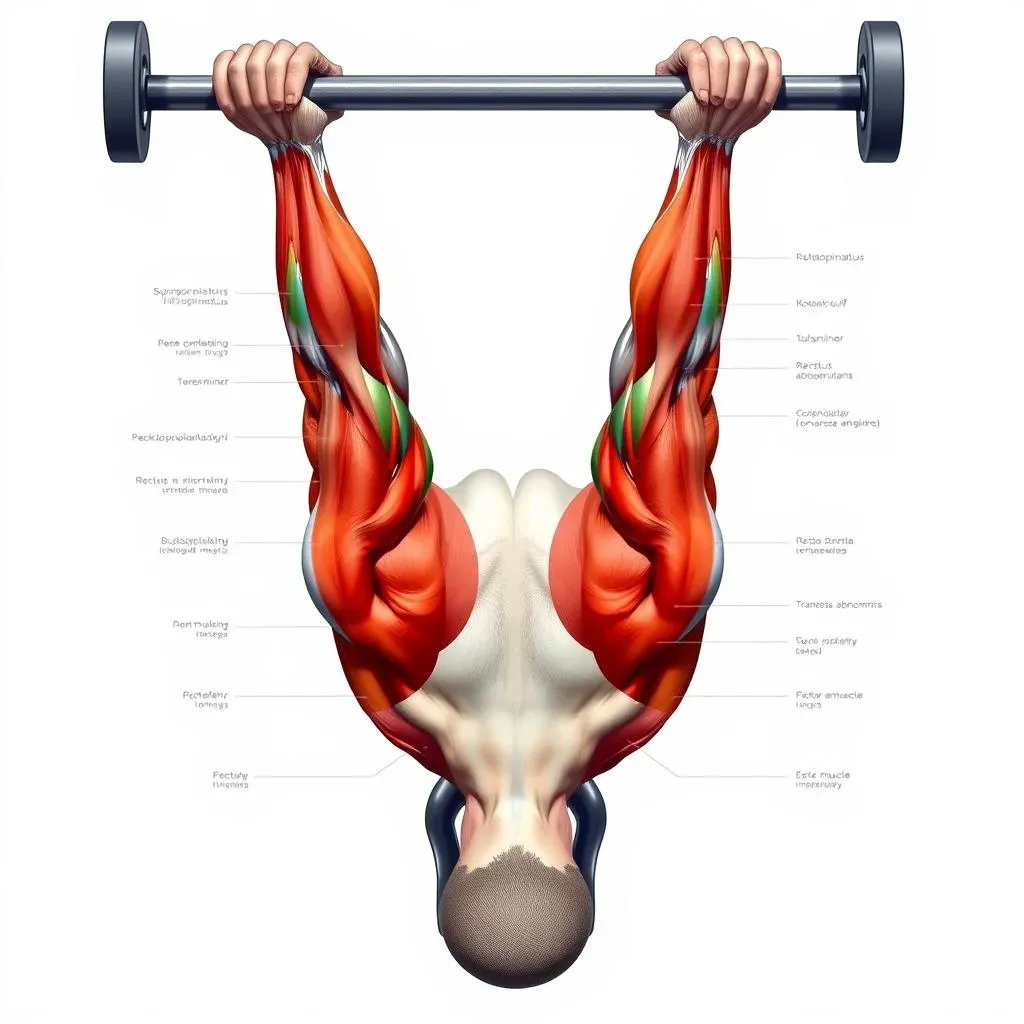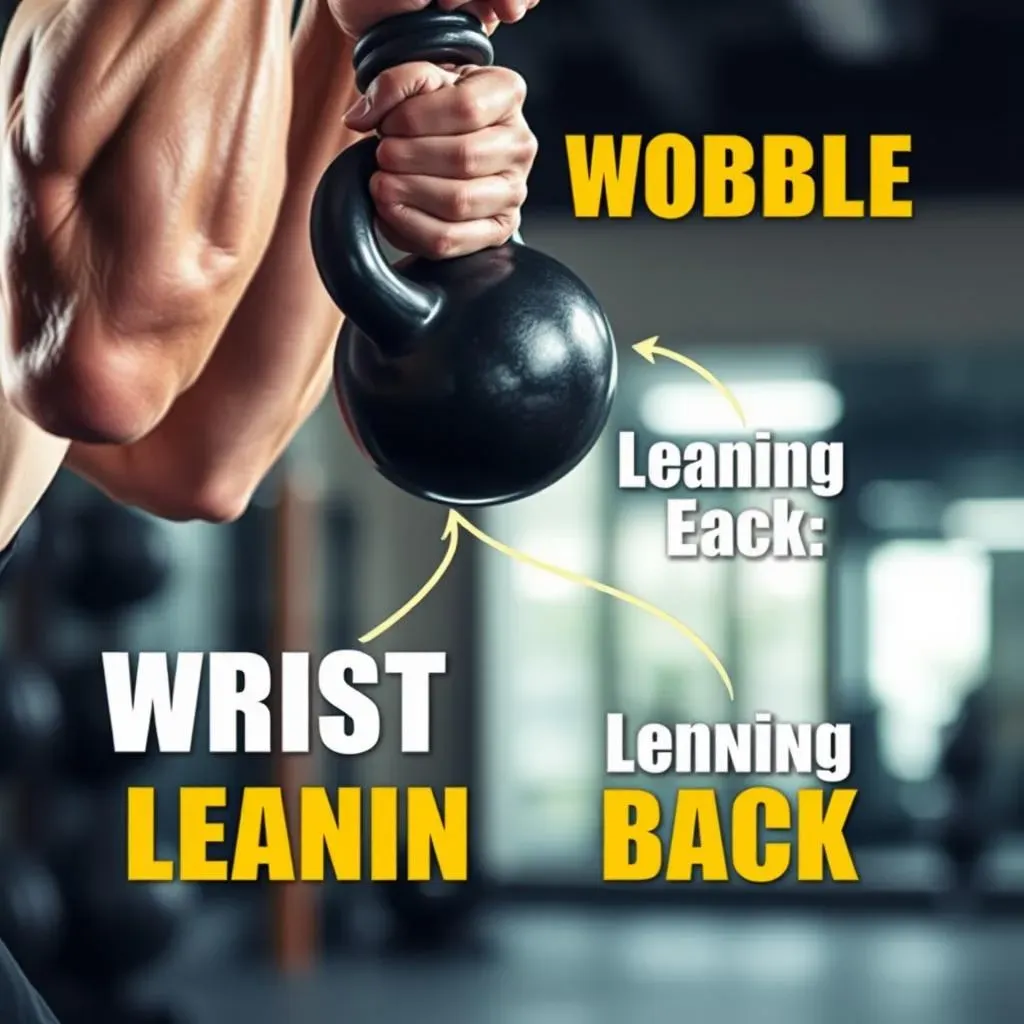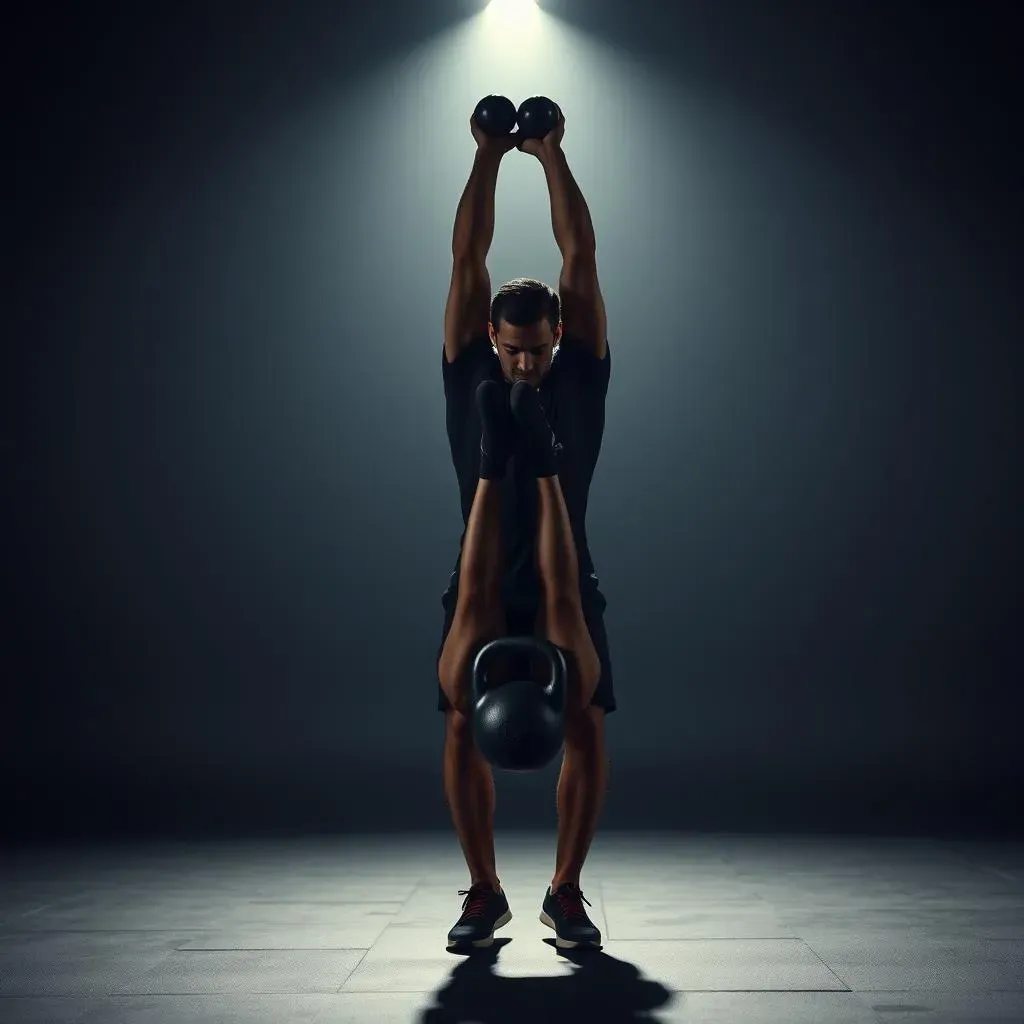Table of Contents
Ready to seriously challenge your shoulder strength and stability? The upside down kettlebell shoulder press isn't just another exercise; it's a test of focus, control, and raw power. Forget casually slinging weight – this movement demands precision. We're not just building muscle; we're forging a bulletproof foundation for your shoulders.
Why the Upside Down Kettlebell Press is a Game Changer

Why the Upside Down Kettlebell Press is a Game Changer
Unleashing Shoulder Stability
so you're pressing kettlebells, big deal, right? Wrong. The upside down kettlebell press flips the script (literally!). By holding the kettlebell with the bell facing up, you're instantly throwing your stability muscles into overdrive. Think of it like this: you're not just lifting weight; you're actively fighting to control a wildly unstable load. This constant battle engages your rotator cuff, traps, and even your grip in a way that traditional presses simply can't match.
It's like turning your shoulder into a finely tuned gyroscope. Every rep demands laser focus and precise muscle activation. This heightened awareness translates to better shoulder health, improved pressing power in other lifts, and a newfound sense of control over your body. Seriously, once you nail this, regular presses will feel almost…easy.
More Than Just a Shoulder Exercise
Don't let the name fool you; the upside down kettlebell press isn't solely about the shoulders. This movement is a full-body symphony of stability. To keep that kettlebell from crashing down, you'll need to engage your core like never before. Imagine drawing your belly button towards your spine, bracing as if you're about to take a punch. That's the level of core activation we're talking about.
And the benefits extend beyond your midsection. Your grip strength will be tested with each rep, forcing you to maintain a vice-like hold on the handle. This translates to better performance in other lifts, like deadlifts and pull-ups. Plus, the mental focus required to keep the kettlebell stable will sharpen your mind and improve your overall coordination. It's a win-win-win!
Perfecting Your Form: Upside Down Kettlebell Press Technique

Perfecting Your Form: Upside Down Kettlebell Press Technique
The Setup: Grip and Stance
Alright, let's get down to brass tacks. The setup is crucial for a successful upside down kettlebell press. Start with a kettlebell that's challenging but manageable – you're better off mastering the form with a lighter weight than struggling with something too heavy. Grip the kettlebell firmly, focusing on squeezing the handle. Your stance should be stable, feet shoulder-width apart, core engaged. Think of it like you're rooting yourself into the ground.
Now, the key is the clean. Get that kettlebell into the racked position smoothly. This means a solid clean, bringing the kettlebell to your shoulder with the bell facing up. Keep your wrist straight and your elbow tucked close to your body. This racked position is your foundation for the press, so nail it down.
The Press: Controlled Ascent
you're racked and ready. Now comes the press. Initiate the movement by pressing straight up, keeping your wrist directly over your elbow. This is where the real stability challenge kicks in. You'll likely feel the kettlebell wobble and try to escape. Resist the urge to overcorrect; instead, focus on micro-adjustments with your grip and shoulder muscles.
Think of it like balancing a tray of drinks – small, subtle movements are key. As you press, maintain a straight line from your hand to your shoulder to your hip. Avoid leaning back or twisting, as this will compromise your stability and increase the risk of injury. The goal is controlled ascent, not a herky-jerky struggle.
Form Cue | Why It Matters |
|---|---|
Straight Wrist | Prevents wrist strain and improves stability. |
Elbow Tucked | Engages lats and protects the shoulder joint. |
Core Braced | Provides a stable base and protects the spine. |
The Descent: Lowering with Control
Don't get sloppy on the way down! The descent is just as important as the press. Slowly lower the kettlebell back to the racked position, maintaining the same level of control and focus. Resist the urge to let the weight crash down; instead, guide it with your muscles.
As you lower, continue to engage your core and maintain a straight wrist. This will help you absorb the impact and prevent any unwanted wobbling. Once you're back in the racked position, take a brief pause to reset before performing the next rep. Remember, quality over quantity is the name of the game.
Muscles Worked: Maximizing the Upside Down Kettlebell Press Benefits

Muscles Worked: Maximizing the Upside Down Kettlebell Press Benefits
Shoulder Powerhouse: Rotator Cuff Activation
Let's break down the muscle party happening during the upside down kettlebell press. First and foremost, we're talking serious shoulder engagement. The rotator cuff – that group of four muscles crucial for shoulder stability – is working overtime to keep that kettlebell from tipping. Think of the supraspinatus, infraspinatus, teres minor, and subscapularis as your shoulder's personal security team, constantly adjusting and firing to maintain control.
This intense rotator cuff activation is what makes the upside down kettlebell press so effective for building shoulder health and preventing injuries. It's not just about raw strength; it's about developing the fine-tuned control necessary for long-term shoulder resilience.
Core Connection: Stability from Within
The upside down kettlebell press isn't just an upper body exercise; it's a full-body stability drill. Your core is the unsung hero of this movement, providing the foundation for a strong and controlled press. The rectus abdominis, obliques, and transverse abdominis all work together to keep your torso stable and prevent excessive twisting or leaning.
Think of your core as the anchor that keeps the ship steady in choppy waters. A strong and engaged core will not only improve your performance in the upside down kettlebell press but also enhance your overall stability and power in other exercises.
Grip and Forearm Strength: The Unsung Heroes
Holding a kettlebell upside down demands serious grip strength. Your forearms are working overtime to maintain a secure hold on the handle, preventing the kettlebell from slipping. This constant grip activation not only improves your forearm endurance but also translates to better performance in other exercises that require a strong grip, such as deadlifts, pull-ups, and rows.
Don't underestimate the importance of grip strength. It's often the limiting factor in many exercises, and the upside down kettlebell press is a fantastic way to address this weakness and build a vice-like grip.
Muscle Group | Benefit |
|---|---|
Rotator Cuff | Improved shoulder stability and injury prevention |
Core | Enhanced stability and power |
Forearms | Increased grip strength and endurance |
Common Mistakes in the Upside Down Kettlebell Shoulder Press (and How to Fix Them)

Common Mistakes in the Upside Down Kettlebell Shoulder Press (and How to Fix Them)
Wrist Wobbles: Maintaining a Stable Base
One of the most common sights during the upside down kettlebell press is the dreaded wrist wobble. It's like watching a tiny earthquake happen right above your head. This usually stems from a lack of wrist stability or using a weight that's too heavy. When your wrist is constantly bending and flexing, you're not only compromising your stability but also increasing your risk of injury.
The fix? Start with a lighter weight and focus on maintaining a straight wrist throughout the entire movement. Imagine a straight line running from your elbow through your wrist to the kettlebell. If you find your wrist wobbling, actively squeeze the handle and engage your forearm muscles to stabilize it. You can also practice wrist stability exercises, such as wrist curls and extensions, to strengthen the muscles around your wrist joint.
Leaning Back: Engaging the Core
Another frequent mistake is leaning back during the press. This shifts the load away from your shoulders and onto your lower back, which is a recipe for disaster. Leaning back often happens when people try to compensate for a lack of strength or stability. They essentially turn the press into a sort of modified back extension, which defeats the purpose of the exercise.
To correct this, focus on maintaining a straight line from your ear to your shoulder to your hip. Engage your core muscles to prevent any excessive leaning or arching of your back. Imagine drawing your belly button towards your spine and bracing as if you're about to take a punch. This will help you maintain a stable and upright posture throughout the press. If you find yourself consistently leaning back, it's a sign that you need to scale back the weight and focus on building core strength.
Mistake | Solution |
|---|---|
Wrist Wobbles | Use a lighter weight and focus on wrist stability. |
Leaning Back | Engage your core and maintain a straight line from ear to hip. |
Rushing the Reps: Emphasizing Control
Like any exercise, rushing through the reps is a common error, especially when fatigue sets in. People prioritize finishing the set quickly, which can compromise their form and increase their risk of injury. The upside down kettlebell press is all about control, and rushing through the reps defeats the purpose of the exercise.
Instead, focus on performing each rep with deliberate control. Take your time during both the ascent and the descent, and pay attention to your body's feedback. If you find your form breaking down, it's better to stop the set and rest than to push through with poor technique. Remember, quality over quantity is the key to maximizing the benefits of the upside down kettlebell press.
Progressions and Variations of the Upside Down Kettlebell Press

Progressions and Variations of the Upside Down Kettlebell Press
Building Blocks: Kettlebell Bottoms-Up Clean and Press
Before you start throwing around heavy kettlebells upside down, let's establish a solid foundation. The kettlebell bottoms-up clean and press is your gateway to mastering the full upside down press. This variation involves cleaning the kettlebell to the racked position with the bell facing up and then pressing it overhead. Sounds simple, right? The challenge lies in maintaining stability throughout the entire movement.
Start with a light kettlebell and focus on controlling the wobble as you clean and press. Pay attention to your wrist and forearm muscles, making micro-adjustments to keep the kettlebell stable. As you get more comfortable, gradually increase the weight. This progression will build the necessary strength and stability for the more advanced variations.
Advanced Challenge: The Double Kettlebell Upside Down Press
Feeling confident with the single kettlebell upside down press? Then it's time to double the fun (and the challenge!). The double kettlebell upside down press involves pressing two kettlebells simultaneously, both held in the upside down position. This variation requires a high level of coordination, stability, and mental focus.
Not only are you having to stabilize the weights, but you are also having to make sure each side is working the same.
Progression | Description | Benefit |
|---|---|---|
Bottoms-Up Clean and Press | Clean and press the kettlebell with the bell facing up. | Builds foundational strength and stability. |
Double Kettlebell Upside Down Press | Press two kettlebells simultaneously in the upside down position. | Enhances coordination, stability, and mental focus. |
Conclusion: Elevate Your Press with the Upside Down Kettlebell
The upside down kettlebell shoulder press is more than just a party trick; it's a potent tool for building shoulder stability, strength, and overall body control. By mastering the technique, understanding the nuances of the movement, and consistently challenging yourself with progressions, you'll not only improve your pressing power but also bulletproof your shoulders against injury. So, grab a kettlebell, flip it upside down, and get ready to press your way to a stronger, more resilient you.